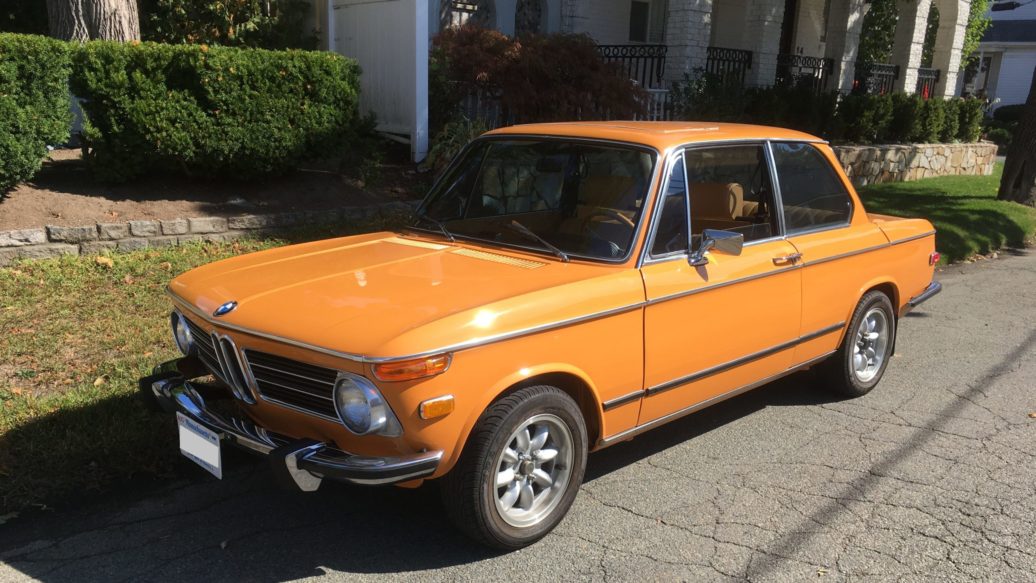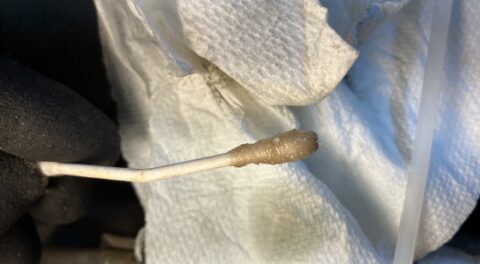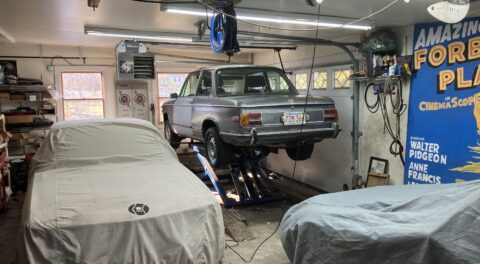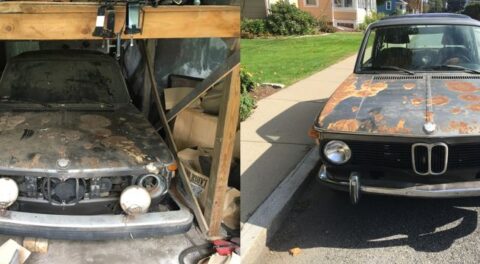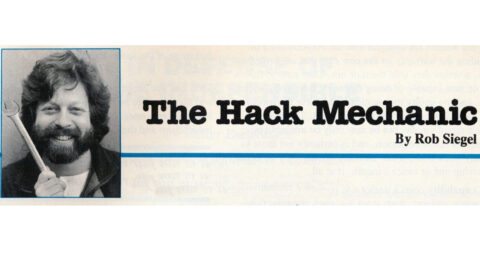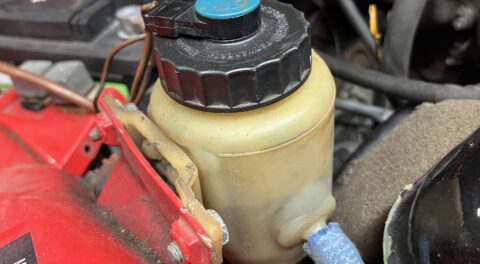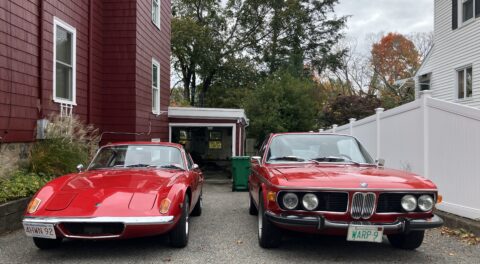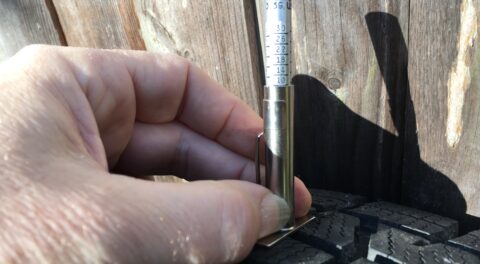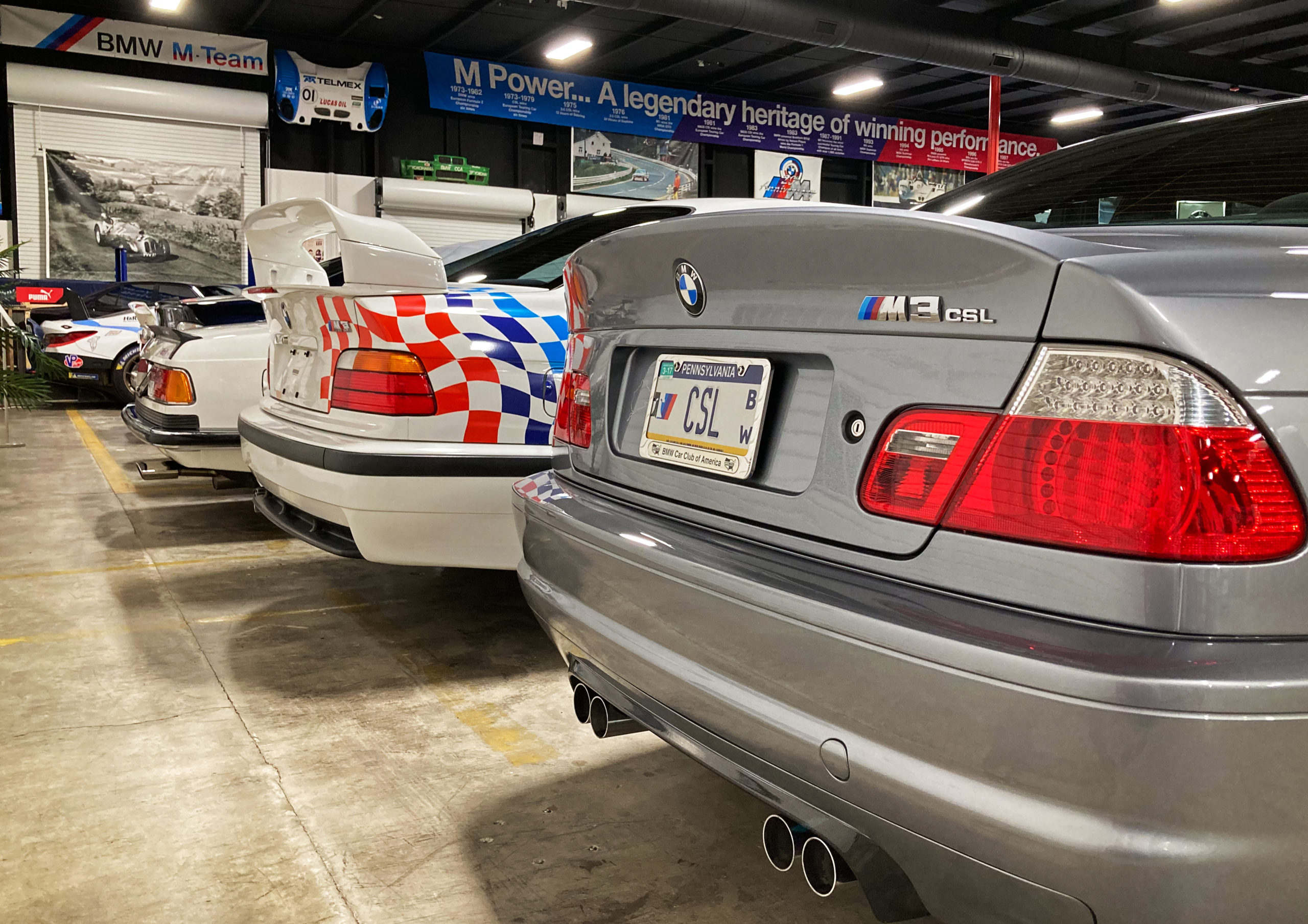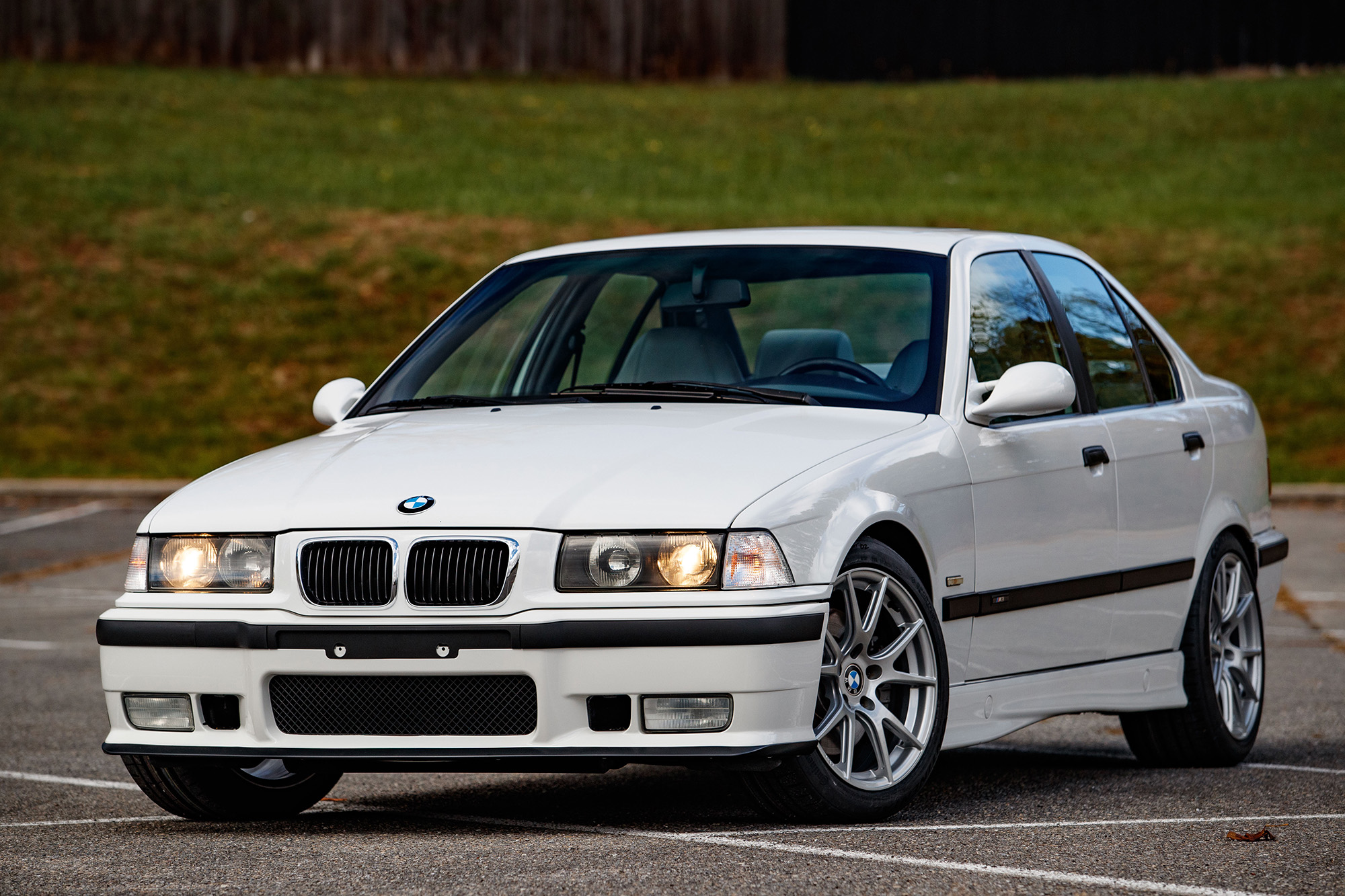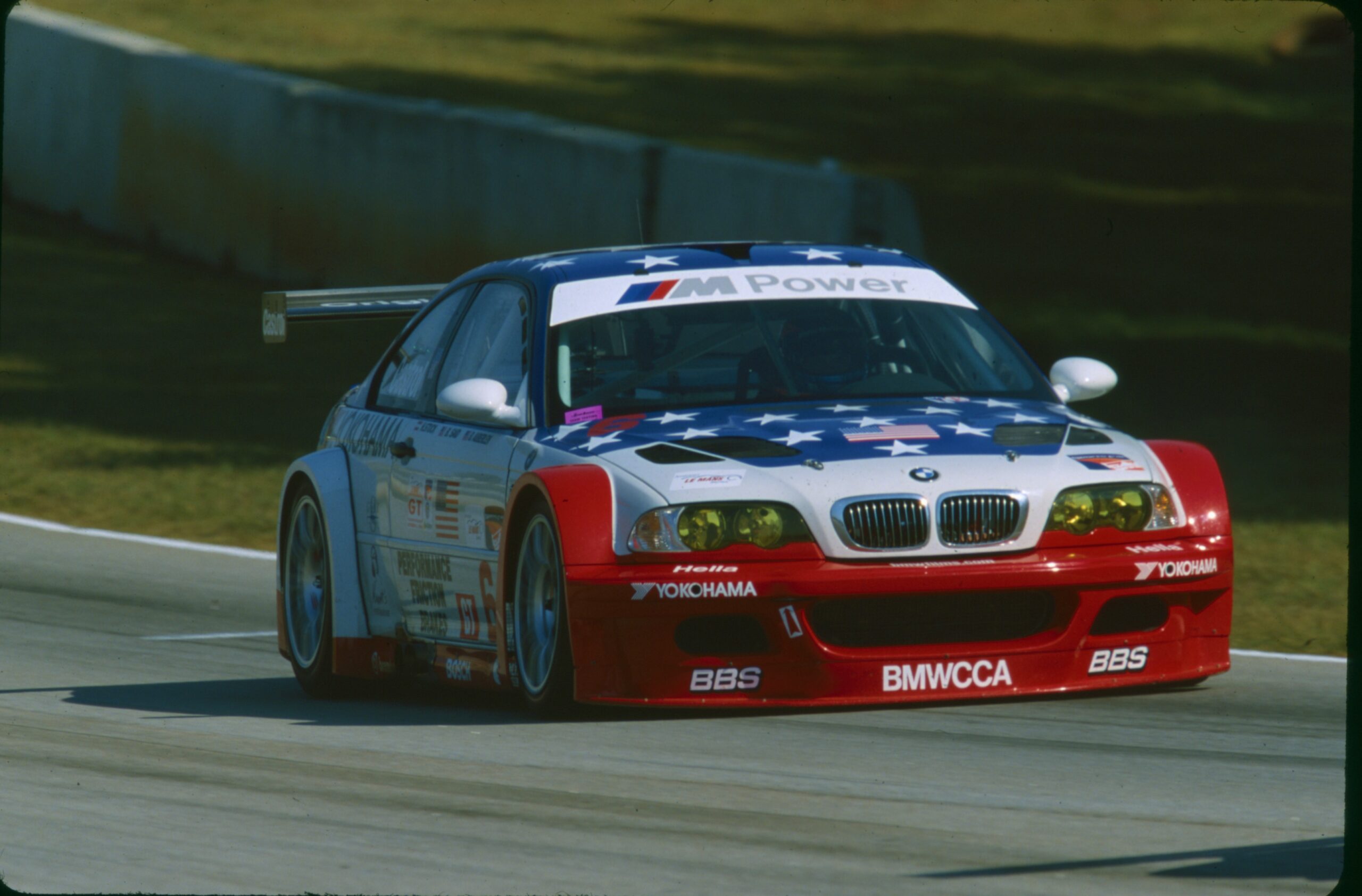About six years ago, after my first book was published, I was giving a talk to the local chapter of the Porsche Club of America, and met Mike. Other than our ages and shared interest in cars, we appeared to have very little in common: He was a type-A hard-charging president of a technology company, and I’m, well, me—but he had an appealing no-nonsense way about him. We became friends.
Mike had some very interesting cars. He’d started off as a Corvette guy, with him and his wife owning a pair of C1 and C2s. Then he moved into Porsches, both vintage and new, then into Ferraris, and then into a variety of 1970s European metal that could be bought in the $15,000-to-$30,000 range. He asked for my help finding an orange round-taillight 2002tii. “You and everyone else,” I told him. I explained about the two shades of orange, how Inka was the better-known darker, more zingy shade, and Colorado the more pale one. He said he didn’t have a strong preference.
In 2014, Bring a Trailer was still in its infancy with the first auctions launching towards the end of that year. If you were looking remotely for cars, the action was still on eBay (and Craigslist, if you searched it nationwide with a tool like Crazedlist or Searchtempest). Mike and I would send each other links to cars we’d seen. We couldn’t find an orange roundie tii, but an interesting blue one turned up on eBay. It was painted a non-original color, almost a robin’s-egg blue, unique and quite pretty. He bought the car.
Not long after that, Mike invited me to a barbecue at his house. “Bring one of your cool cars,” he said. I drove the 3.0CSi out to a leafy town off I-495, found the address, drove down the twisty driveway, and saw a Garage Majal that was the size of the house—and a parking area that had not just two Ferraris, a McLaren, and a Shelby Daytona Coupe replica parked in it, but the Batmobile. And I mean the Batmobile, the George Barris-built movie/television car from the 1960s. “A friend of mine just bought it,” Mike said, “and needed somewhere to stash it for a few weeks.”
So yeah, Mike’s an interesting guy.
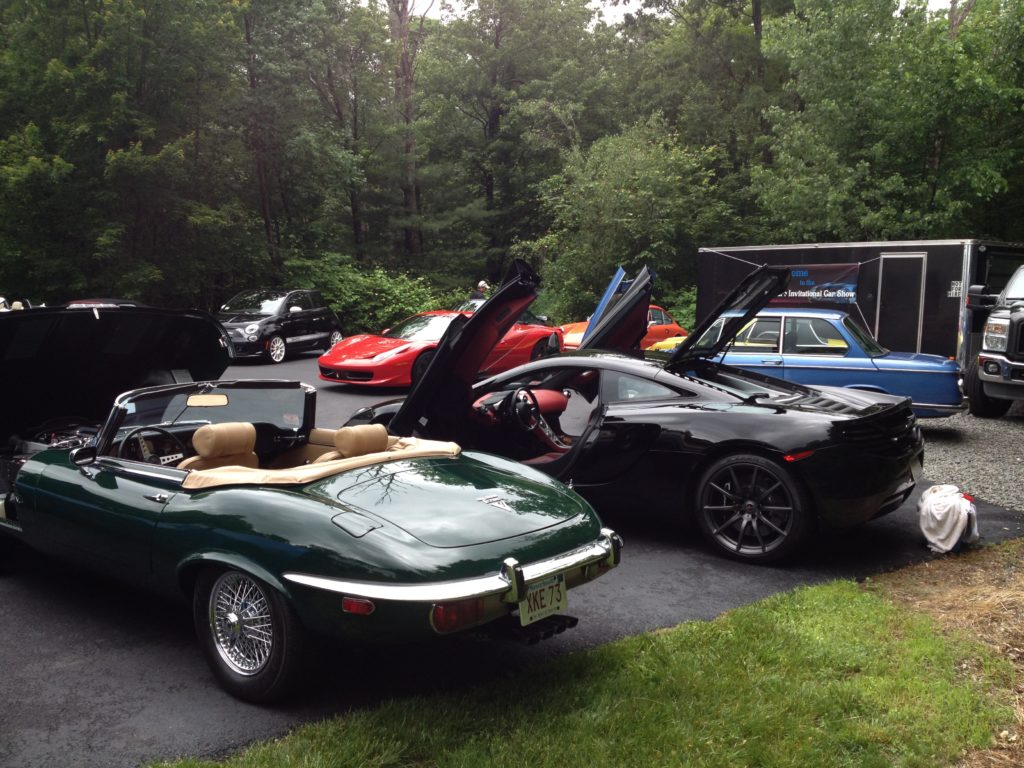
There were brighter stars at Mike’s barbecue than his new blue tii.
The tii Mike had just bought, robin’s-egg blue or no, was—I hate to say it—one of the least interesting cars at the barbeque. But since I’d had a hand in its purchase, obviously I was curious. Mike said that it was leaking a fair amount of oil, and asked me if I could take a look at it. I pulled the Tyvek suit out of the trunk of my 3.0CSi, zipped it on, crawled under the car, and diagnosed that the leak was, surprisingly, coming from the front seal of the Kugelfischer injection pump.
I told Mike the bad news. “Can you help me with it?” he asked.
“Well, advice is always cheap,” I joked.
“No,” he said. “Could you fix it for me?”
I said, “Well, if you read my book, you know that there are six chapters titled ‘Why I don’t work on other people’s cars for money.’ ” (This is true).
“What are you afraid of?” he asked in his very direct manner. I had to think about it for a moment.
“Things go wrong all the time working on cars,” I said. “I’m not insured as a business. If a can of Fix-O-Flat falls off a shelf and scrapes the hood, we’ve got a problem.”
“Look,” Mike said in his no-nonsense way, “you see what I’ve got. This is not a valuable car to me. I wouldn’t bust your balls over something like that. Quit worrying. Plus, you’re the most qualified person in Boston to fix this oil leak.”
Sometimes you never know what the key to yourself is until someone slips it in and turns the tumblers in the lock. In my case, it was my own vanity. I thought about it and realized he was right.
The blue car turned out to need a lot of work not disclosed on eBay, and so, in addition to replacing the oil seal in the front of the Kugelfischer injection pump, I wound up doing a lot to set the car right. And then, just when I’d gotten it well-sorted and was about to return it to Mike, a Colorado orange ’73 tii showed up on eBay. There was a lot to like about it; in addition to the fresh repaint in the original color, it had a five-speed, a sunroof, the correct tii nose, and, reportedly, working air conditioning—but it also had an odd interior: The seats and door panels had been reupholstered in a non-stock fabric, and the armrests were a contrasting black, giving it a bit of a Halloweenish feel. Mike bought it with very little hesitation, explaining that sometimes the law of averages works in your favor.
He was right. If the blue car was much worse than expected, the Colorado car was much better than expected, at least mechanically, needing very little in terms of sort-out. Mike had me sell the blue car for him on eBay, trading me a week in his and his wife’s house on Nantucket for my services. In addition, he incentivized me by offering me a set of newly-Aardvarc-reupholstered E21 Recaros he’d bought but never installed if the sale price of the car crossed a certain threshold.
It did, and those seats went into my own tii. So it was a relationship that worked out well for both of us.
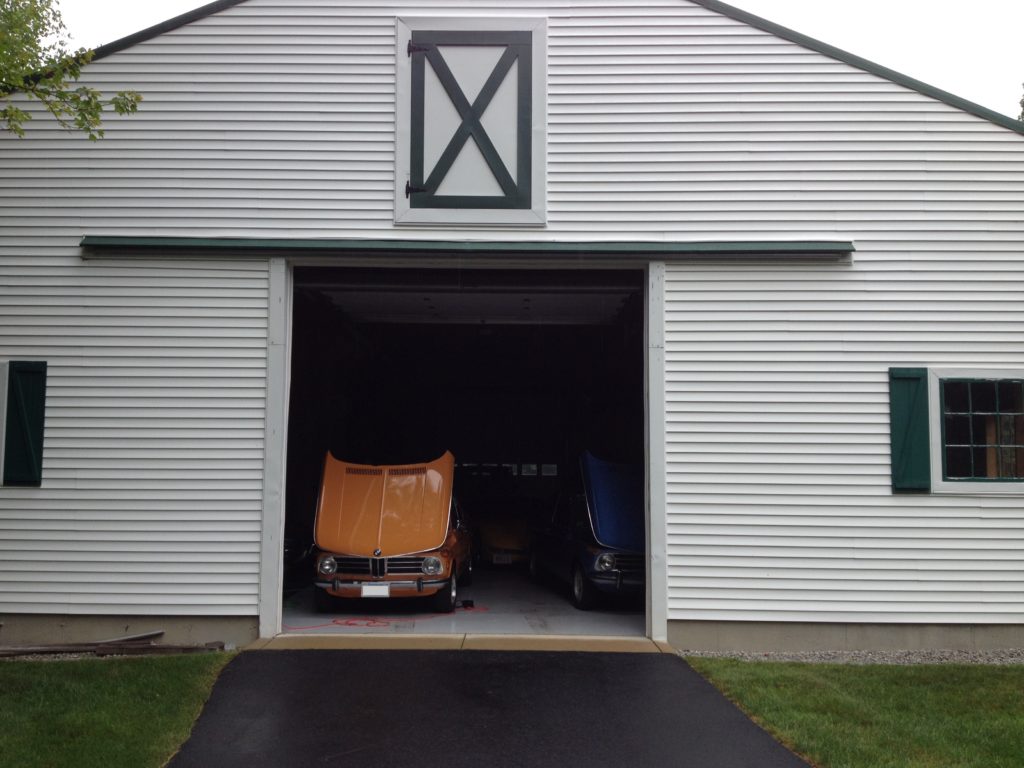
The blue tii and the Colorado tii peek out from Mike’s garage—space I’d give my eyeteeth for—in 2014.
Mike and I stayed on touch on Facebook, but I didn’t see him for about four years. Then, last month he contacted me, saying that he was ready to sell the Colorado tii and asking me if I’d help him for a commission. I said sure, but what I’d prefer instead of a commission was space over the winter in his garage for one or two of my cars, because I was losing access to the storage space in the warehouse of my old geophysics job (I’m still technically a consultant) where I’d been keeping one car over the winter for several years. We agreed that the easiest thing for both of us was for me to drive over to his place in one of the cars I wanted to over-winter there, and drive back in the tii. It was only the first week of October, which felt more than a little early in the season for me to give up the 3.0CSi, but I was putting time into other cars and wasn’t really driving it, so over to Mike’s it went.
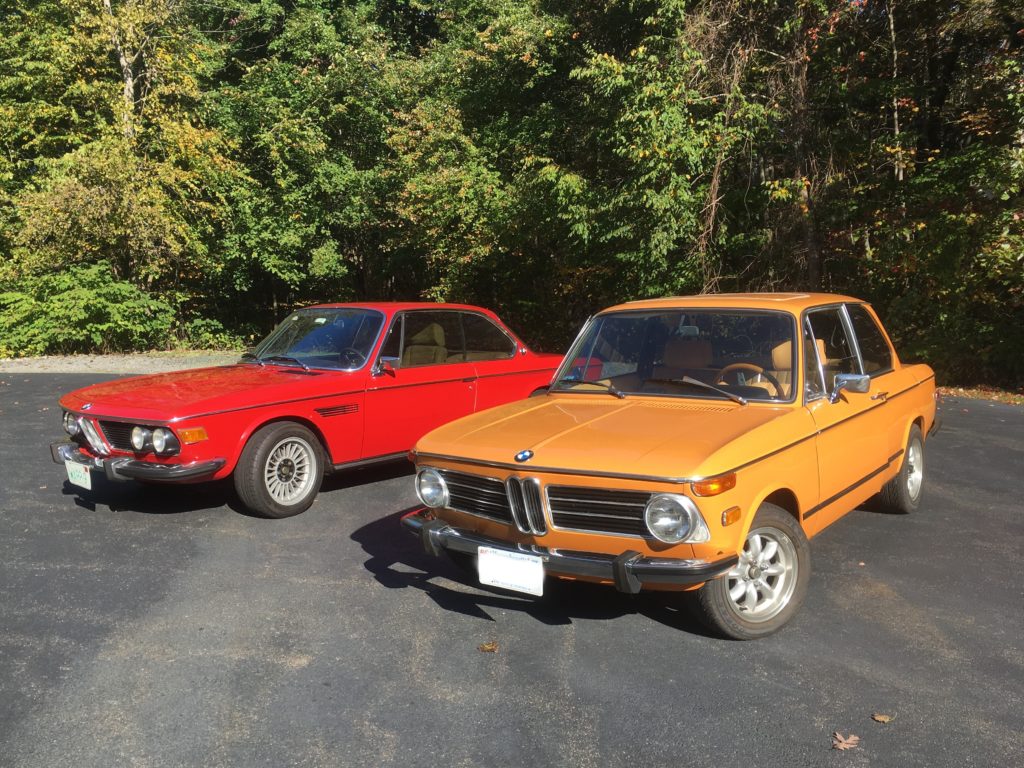
My E9 and the Colorado tii made a lovely October pair.
When I arrived, Mike and I had a long catch-up chat. He’d had some health issues, which he was now mercifully through the other side of, had sold all the cars, was indulging his passion for photography instead, and had turned the garage that holds fifteen cars into a giant studio. I advised him that these days, Bring a Trailer was the best place to sell the Colorado tii, if they’d take it. We did a handshake agreement on my taking the car, cleaning it up, and handling all aspects of the sale except for the actual money transfer, in exchange for up to two over-winter spaces in his garage. If the tii needed substantial additional repair or maintenance work, we’d discuss that separately.
When Mike backed the tii out of the garage, I heard a snotty metallic rattle; it sounded like a loose exhaust shield or clamp, and it came and went as the car was idling in the driveway. I took a minute, did some laying on of hands, and couldn’t find the source, but also reassured myself that it wasn’t the water-pump bearing about to self-destruct on the 40-mile drive back to my house. I piloted the pretty pale orange tii home, getting multiple thumbs-ups along the way, and was delighted to find that it ran very well; other than finding and fixing the rattle, I wasn’t going to need to do much to it other than photograph and describe it.
Arriving at my home, I jumped on the car immediately. I put it up on my mid-rise lift and thoroughly photographed the undercarriage, which was largely as I remembered it: rust-free with a fair amount of overspray from the Colorado repaint. I then gave the car a light cleaning, took it out to a parking lot on a sunlit October afternoon, and photographed it. In the process, I discovered some things I’d forgotten, and found that it was a bit more of a Franken-car than I remembered. In addition to the unusual interior, it was wearing a trunk lid with a BMW emblem in the center, meaning that the lid was off a later big-bumper car, as was the one-piece dashboard. In addition, the front fenders had been replaced, and the top seams with the nose had never been filled in. And the installation and alignment of the hood was a little wonky, with the hood supports hitting the tops of the fenders. I told Mike about all this and warned him that it wasn’t a mint-correct tii that was going to bring all the money. He gave me a reasonable reserve price that he was comfortable with.
I began writing up the description. Bring a Trailer doesn’t let you submit a pre-written ad, but I didn’t know if they’d accept the car, and even if they did, I wanted to get all the facts in one place. Plus, when I sell a car, the act of writing the description often triggers me to fix certain things; after all, it’s always better to fix something rather than apologize for it. Unfortunately, the odds of finding an entire good stock interior to swap for the custom one were slim, and the body reassembly issues were outside the scope of my representing the car. Still, it was a very pretty numbers-matching rust-free five-speed correct-no-snorkel-nose roundie tii in a highly-desirable color. I figured that if BaT would take it, and if I disclosed the flaws rather than leaving them to be exposed and poked to death by the snipers in the peanut gallery, it could do well. As they say, it only takes two people who want it.
While I was moving the car to shoot the obligatory walk-around, cold-start, and driving videos, the snotty rattle kept appearing and vanishing like the Loch Ness monster. More laying on of hands and poking with a mechanic’s stethoscope seemed to localize it to the a/c compressor, which had been updated from the original upright York compressor to a smaller compact Sanden unit. In one of my own cars, a similar rattle had been coming from one of the a/c hoses, and I’d squelched it by putting some foam between the hose and the body. I tried the same trick on the Colorado car, and was convinced that I’d solved it.
Until I pulled it out of the garage one morning and discovered that the rattle was back.
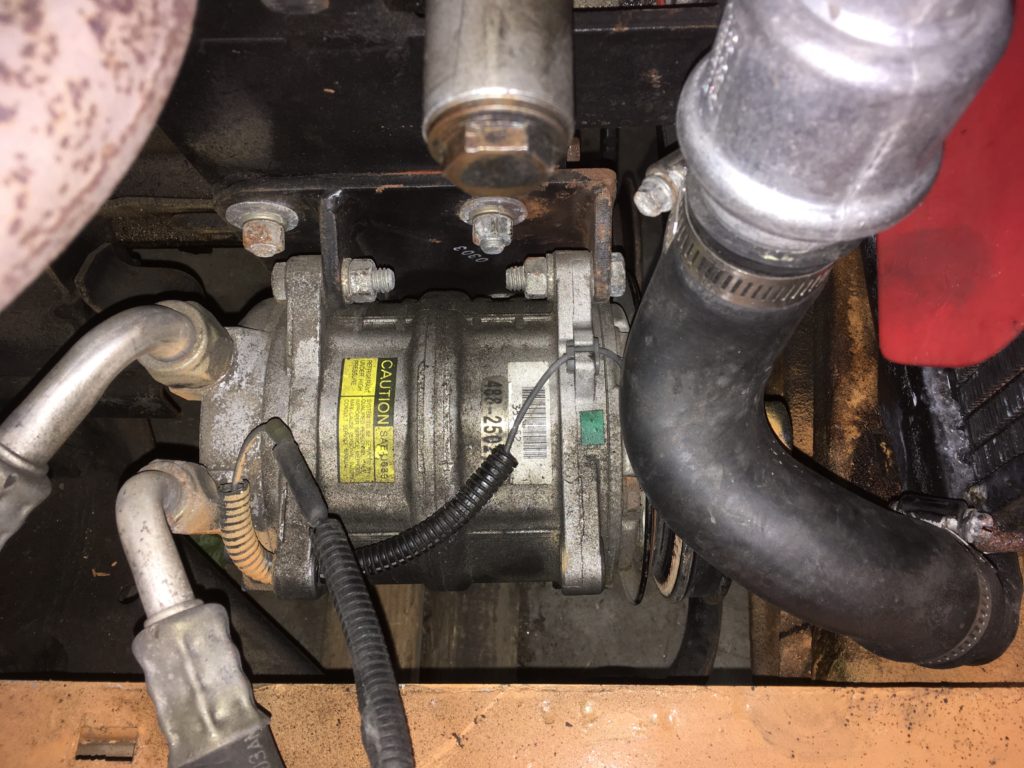
It was coming from somewhere around here…
As part of the auction preparation, Mike sent me a copy of the original eBay description from when he’d bought the car in 2014. Curiously, it called out “a bolt on the a/c compressor bracket is missing.” I examined the bracket and, while I didn’t see a hole with a missing bolt, I noticed that even though the compressor was a modern Sanden rotary-style unit, it was still using the original York compressor bracket—with an adapter bolted to it. This “two-bracket” configuration is often an opportunity for misalignment and vibration; the solution is to replace it with a proper single bracket designed for the Sanden and the 2002’s M10 engine.
But doing so isn’t trivial. The compressor belt length is different when using the other bracket, and on a tii, the compressor belt is behind the belt that spins the Kugelfischer injection pump, so the injection belt needs to come off first. None of this brain surgery, but it’s several hours of work.
I tightened every bolt on the compressor and on both of the brackets that I could reach. Initially it seemed to help, but, as with the foam, eventually, when I backed the car out of the garage, the rattle was still very clearly there.
When the photos, videos, and description were all done, I submitted the car to BaT. About a day later, I received the email saying that they’d accepted it. So now I really did need to find and fix the rattle. To find it, I needed it to manifest itself consistently. I noticed that it occurred most frequently when pulling the car out of the garage, and thought that maybe the key was simply the drop in engine rpm. I lowered the idle speed with the screw on the side of the tii’s “tuna can,” and sure enough, the engine rattled steadily. (I laughed to myself, because during the pandemic, my wife and I have been watching a lot of episodes of House, and it was reminiscent of the whole dynamic in which the intern says “Doctor, he’s worse,” and House says “GOOD!“)
With the engine running, I again poked and prodded and listened with the stethoscope, again seeming to localize the rattle to the compressor, but I still couldn’t find the exact source. In frustration, I reached in with my right hand to grab the compressor and somehow misjudged, and my index finger momentarily contacted its rotating pulley. Fortunately, I didn’t gash my finger (or worse, catch it in the belt), but the pulley rapidly twanged my finger off at a 90-degree angle to its normal plane of motion. I was worried that this might have broken it—my finger, not the pulley—but I think I just stretched a tendon.
It was just enough for me to think “Okay, this time it’s personal!” gird my mechanic’s loins, and go for the kill.
I reached in more carefully, grabbed the compressor, and tried to rock it up and down. While there was no obvious play, there was no question that creating tension in either direction, leaning it either into the engine block or away from it, made the rattle vanish. Maybe there was a bolt missing, creating just enough of a gap between part of the bracket and the block to set up a vibration. I seemed to remember that there were bolts holding the bracket to the block that couldn’t be reached with the compressor in place; maybe I did need to take the whole compressor-and-bracket-on-bracket apart.
But first I tried one more thing. There was one part I hadn’t checked yet: the idler pulley. I crawled under the car, and, being very careful of the rotating belt and pulley, laid my hands on the bracket that supports the pulley. The rattle did feel stronger there. I verified this with the stethoscope.
And then I saw it: Plain as day, there was a washer behind a bolt holding the bracket onto the lower timing cover. I could see the washer dancing around.
Gotcha.
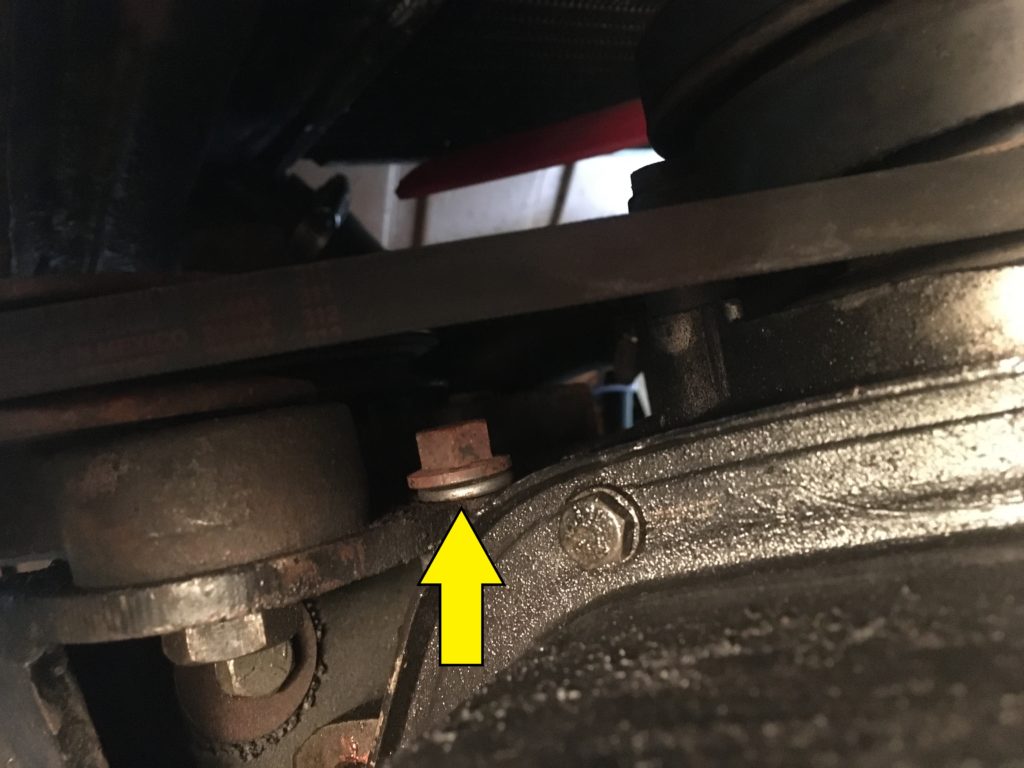
Why, you little—!
A couple of twists of a 13-mm socket tightened it. I instantly felt that I’d never hear this rattle again—and I was right. If that’s not the best feeling in the world, I don’t know what is. It’s like I’ve always said: There are two kinds of people in this world—those who think that accidentally touching a rotating compressor pulley and stretching a tendon as part of finding and fixing a snotty rattle in a car you don’t even own but are bartering sale services for in exchange for over-winter storage space is totally worth it, and those who don’t.
As I write this, there are five inches of newly-fallen snow in Boston, so as it turned out, I wasn’t as early in putting the 3.0CSi away for the winter as I’d thought. And BaT has been unexpectedly slow in preparing the auction for the Colorado tii; it’ll likely go up sometime after the election. The Colorado tii isn’t a car that I expected to have back in my garage, and Mike isn’t a friend with whom I’d expected to rekindle a relationship, but these things often happen for a reason. Who knows? Maybe Mike and his wife will move to Nantucket, and sell me and Maire Anne the house with the fifteen-car garage.—Rob Siegel
Rob’s latest book, The Lotus Chronicles: One man’s sordid tale of passion and madness resurrecting a 40-year-dead Lotus Europa Twin Cam Special, is now available here on Amazon. Signed copies of this and his other books can be ordered directly from Rob here.

